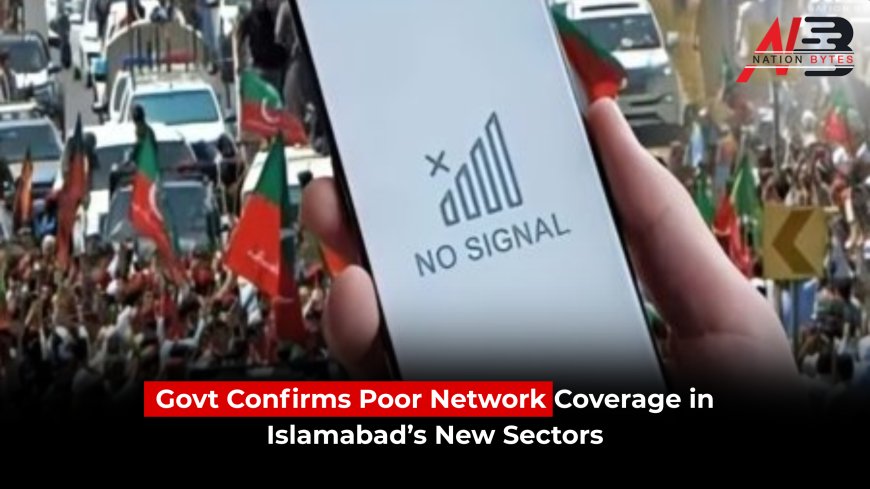Govt Confirms Poor Network Coverage in Islamabad’s New Sectors
Government admits mobile and internet coverage in Islamabad’s new sectors remains poor, as residents face weak signals and slow data speeds.

Despite being promoted as part of the capital’s modern expansion, residents of Islamabad’s new sectors are still struggling with weak mobile signals and unstable internet connections. The government has now officially confirmed that network coverage in these areas remains below standard, validating what locals have been reporting for years.
Connectivity Issues Across Newly Developed Sectors
According to recent reports, sectors including I-14, I-16, G-13, and parts of D-12 face frequent call drops, slow 4G speeds, and poor indoor connectivity.
Residents say that despite repeated complaints to telecom operators and authorities, there has been little visible improvement on the ground.
“Even making a simple phone call is a struggle here,” said Arif Malik, a resident of I-14. “Our area was supposed to represent modern Islamabad, but we can’t even get stable internet inside our homes.”
PTA Acknowledges Ongoing Problems
The Pakistan Telecommunication Authority (PTA) has confirmed that it continues to receive a large number of complaints about weak mobile coverage in these new residential sectors.
Although mobile operators have installed new towers and upgraded their systems in the last two years, coverage gaps remain due to terrain, dense construction, and infrastructure delays.
“Operators have made some upgrades, but challenges persist due to the population spread and restrictions on new tower sites,” said a PTA spokesperson. “We are working closely with telecom companies to improve overall service quality.”
Limited Expansion and Commercial Delays
Reports show that nine new mobile base stations have been established in I-14 and I-16, with additional upgrades around nearby neighborhoods. However, telecom operators have been slow to expand larger scale infrastructure, citing limited commercial returns from developing sectors.
“Telecom companies don’t see quick profits here,” said digital analyst Saad Rehman. “But connectivity should be treated as a public utility, not just a business. Every citizen deserves access to reliable service.”
Residents Voice Frustration
Many residents have expressed frustration over paying full telecom rates but receiving subpar service quality compared to central Islamabad.
“We pay the same bills as people in Blue Area or F-8, but our network quality is far worse,” said Sana Yousaf, a student from G-13. “It feels like these sectors were developed without proper telecom or transport planning.”
Temporary Fixes and Long-Term Promises
As an interim measure, the PTA has advised users to install signal repeaters or use Wi-Fi offloading for better indoor coverage.
Residents, however, argue that these are short-term fixes and fail to address the root cause the lack of strong telecom infrastructure.
The government has now pledged to tighten oversight of telecom operators and speed up the approval process for new tower sites. Officials are also reviewing plans for shared tower networks and policy reforms aimed at improving coverage in under-served areas
For more latest telecom updates, visit Nation Bytes
Disconnected in the Capital
Until these initiatives materialize, Islamabad’s newest sectors will remain connected in name only with residents still waiting for the digital access they were promised as part of the city’s modern expansion.

 Israr Ahmed
Israr Ahmed